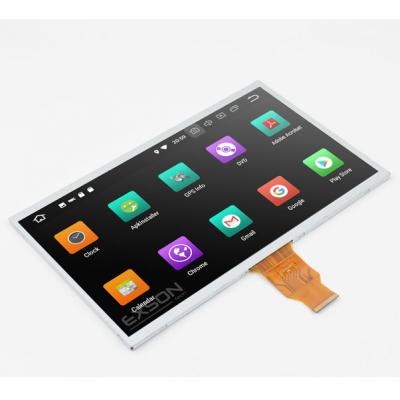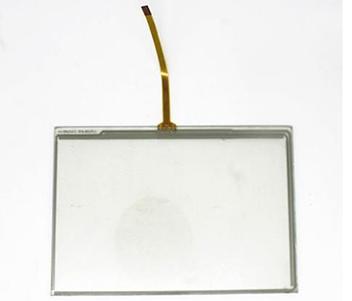In the dynamic landscape of interactive technology, touch panel modules have become the backbone of seamless user experiences. However, the key to unlocking the full potential of these modules lies in their customization and thoughtful design. Today, we explore the intricacies of touch panel module customization and the critical design considerations that influence their performance and user interactions.
At the core of touch panel module customization is the recognition that one size does not fit all. Understanding the specific needs and preferences of end-users is paramount. Whether it's a sleek control panel for a smart home device or a robust touchscreen for an industrial application, customizing touch panel modules ensures that the interface aligns seamlessly with user expectations, fostering a positive and engaging interaction.
The visual appeal of touch panel modules plays a crucial role in user satisfaction. Customization allows designers to harmonize the user interface with the overall aesthetics of the device. From color schemes and button placements to the overall layout, every aspect can be tailored to create a cohesive and visually appealing user experience.
The physical dimensions of the device heavily influence touch panel module customization. Whether it's a compact wearable or a large interactive display, the size and form factor dictate the layout and design possibilities. Customization ensures that the touch panel module seamlessly integrates into the device without compromising functionality or aesthetics.
The sensitivity of the touch panel and its ability to support multi-touch gestures are critical factors in user interactions. Customization allows for fine-tuning these features to match the specific requirements of the device. Whether it's a high-sensitivity touchscreen for precise controls or multi-touch capabilities for intuitive gestures, customization ensures that the touch panel module aligns with the device's intended use.
Customization extends to the selection of materials used in the touch panel module. Factors such as scratch resistance, durability, and the ability to withstand environmental conditions are essential considerations. For devices that may encounter harsh conditions or frequent use, customization allows for the incorporation of materials that enhance longevity without compromising on performance.
Devices utilizing touch panel modules can find themselves in a variety of environments, from indoor spaces to outdoor applications. Customization takes into account these environmental considerations, ensuring that the touch panel is designed to withstand temperature variations, humidity, and exposure to sunlight, providing a reliable and consistent user experience in diverse settings.
In the ever-evolving landscape of interactive technology, the customization of touch panel modules is the key to unlocking a new realm of possibilities. As manufacturers and designers continue to innovate, customization allows for the creation of touchscreens that not only meet but exceed user expectations. The future of touch panel modules lies in their adaptability and ability to seamlessly integrate into devices, shaping interactions that are not only intuitive but truly transformative. Embrace the power of touch panel module customization, and embark on a journey to tailor tomorrow's interactions today.
 How Important Are TFT Screens in the Medical IndustryJuly 1, 2024To select the right TFT LCD display for medical applications, engineers and decision-makers need to have a comprehensive understanding of how the specifications of TFT LCD screens affect the final pro...view
How Important Are TFT Screens in the Medical IndustryJuly 1, 2024To select the right TFT LCD display for medical applications, engineers and decision-makers need to have a comprehensive understanding of how the specifications of TFT LCD screens affect the final pro...view The Difference Between LCD and LEDSeptember 26, 2022Customers often ask us about the difference between LCD and LED. Seen below will explain it in detail for you.1. Brightness: the response speed of a single element of the LED display is 1000 times tha...view
The Difference Between LCD and LEDSeptember 26, 2022Customers often ask us about the difference between LCD and LED. Seen below will explain it in detail for you.1. Brightness: the response speed of a single element of the LED display is 1000 times tha...view What Are the Advantages of Resistive Touch Screen?February 8, 2023Resistive touch screens were first invented in 1971 by Dr. Samuel G. Hurst. He calls the sensor the Elograph, after his company, Elographics.Ⅰ. What is a resistive touch screen?As the name suggests, ...view
What Are the Advantages of Resistive Touch Screen?February 8, 2023Resistive touch screens were first invented in 1971 by Dr. Samuel G. Hurst. He calls the sensor the Elograph, after his company, Elographics.Ⅰ. What is a resistive touch screen?As the name suggests, ...view Capacitive LCD Display: Touch InteractionAugust 13, 2024A capacitive LCD display is a display module that integrates capacitive LCD display technology with liquid crystal display technology. The capacitive LCD display uses a four-layer composite glass scre...view
Capacitive LCD Display: Touch InteractionAugust 13, 2024A capacitive LCD display is a display module that integrates capacitive LCD display technology with liquid crystal display technology. The capacitive LCD display uses a four-layer composite glass scre...view TFT Display Module: Exploring the Future of VisualsAugust 13, 2024The TFT display module refers to a technical implementation method on a liquid crystal display (LCD), where each liquid crystal pixel is driven by a thin-film transistor (TFT) integrated behind it. On...view
TFT Display Module: Exploring the Future of VisualsAugust 13, 2024The TFT display module refers to a technical implementation method on a liquid crystal display (LCD), where each liquid crystal pixel is driven by a thin-film transistor (TFT) integrated behind it. On...view Perspective Selection for Industrial LCD ScreensJune 30, 2023We will discuss the viewing angles of industrial LCD screens and how to choose the appropriate viewing angle for your project.Overview of viewing angles for industrial LCD screensScreen viewing angle ...view
Perspective Selection for Industrial LCD ScreensJune 30, 2023We will discuss the viewing angles of industrial LCD screens and how to choose the appropriate viewing angle for your project.Overview of viewing angles for industrial LCD screensScreen viewing angle ...view Call us on:
Call us on:  Email Us:
Email Us:  2F-M1 XiaWei Industrial Park, GuanLan, LongHua District, SZ, China
2F-M1 XiaWei Industrial Park, GuanLan, LongHua District, SZ, China